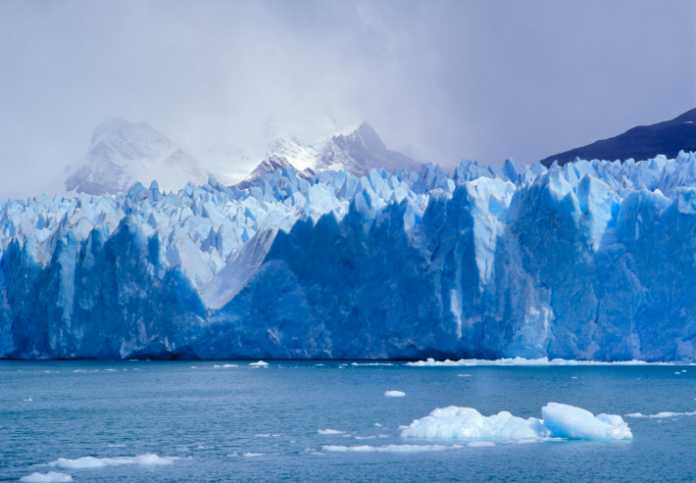Whether it’s cooling temperatures or ever growing piles of snow and ice, Antarctica continues to defy the predictions of scientists wedded to the use of climate models that have been proven flawed time and again and the theory humans are causing dangerous climate change.
In Antarctica, as I think science shows elsewhere, it is nature that continues to drive climate fluctuations, with only minimal regional help from humankind.
On the temperature, front reports from international research stations across Antarctica show much of continent has cooled in recent decades, becoming colder on average than when Roald Amundsen first reached the South Pole in 1911, long before human industrialization began adding large volumes of carbon dioxide to the atmosphere, which climate models indicate should be causing Antarctica, and the entire world, to warm.
Showa Station, a Japanese Meteorological Agency outpost in Antarctica, reports a slight cooling trend from 1985 until 2017. The Australian research outpost Davis Station has found no warming trend during the past six decades.
Data collected by the Royal Dutch Meteorological Institute from all 13 research stations spread across Antarctica show 10 of the stations demonstrate no warming trend, with some showing a slight temperature decline. Only three of the stations, all on the Antarctic Peninsula, show a slight warming trend.
Two studies from 2016—one from the British Antarctic Survey (BAS) and a second from scientists based in the United States—found natural factors account for temperature variability in Antarctica. Neither study found a human influence. The BAS study, published in Nature, concluded natural shifts in wind and ocean current circulations are the primary reason for changing, variable temperature in Antarctica. “Temperatures have decreased as a consequence of a greater frequency of cold, east-to-southeasterly winds, resulting from more cyclonic conditions in the Northern Weddell Sea associated with a strengthening mid-latitude jet,” the authors write.
Ohio University researchers Ryan Fogt and Megan Jones report Antarctica’s temperature was relatively high during the Amundsen and Scott expeditions of 1911 and 1912. Writing in an American Meteorological Society journal, they state, “Amundsen and his crew experienced temperatures that peaked above negative 16 degrees C[elsius] on the Polar Plateau on 6 December 1911, which is extremely warm for this region. … Scott also encountered unusually warm conditions at this time.” By contrast, the current average summer temperature for the South Pole’s Polar Plateau is -28.2 degrees Celsius.
With temperatures stable or falling, could Antarctica be losing ice and snowpack on balance, thus contributing to sea level rise as climate models say is should be? It turns out the answer is no!
New research from scientists with the British Antarctic Survey shows snowfall in Antarctica has increased by 10 percent during the last 200 years. A new analysis of Antarctic ice cores shows the continent has accumulated an additional 272 gigatons of water since the early 1800s. This confirms earlier work showing although parts of West Antarctica have lost ice recently, most of the continent, including the Antarctic Peninsula, East Antarctica, and the vast interior is gaining ice. This research indicates climate models are wrong to assume Antarctica is on net contributing to rising seas.
In a press release announcing the findings, Elizabeth R. Thomas, lead author of the study, says understanding the ice mass balance in Antarctica is critical to an accurate appraisal of any contributions the continent might be making to ongoing sea level rise
“There is an urgent need to understand the contribution of Antarctic ice to sea-level rise,” said Thomas in the news release. Thomas added, “Our new results show … the annual average snowfall during the first decade of the 21st century is 10 percent higher than at the same period in the 19th century.”
If climate models don’t get basic projections of temperature right, and they don’t either in Antarctica or in projected amounts of global increase, and they don’t get predictions on Antarctic snow and ice right, and the research cited above (along with other studies I’ve highlighted in previous posts) show they don’t, and they don’t get projections about polar bear population collapse or hurricane strength and frequency correct, what is left to hang fears of predicted anthropogenic climate change on? No single missed prediction alone is enough to prove the humans aren’t causing dangerous climate change, but as the missed projections mount, it should raise questions concerning how well scientists really understand the causes and consequences of climate change, and whether we can confidently state — and should make costly public policies based on — the belief human activities are causing dangerous global warming.














[…] a Climate Realism post from April, James Taylor goes into some detail describing the cooling temperatures and ongoing ice and snow accumulation […]
What are we doing to our Planet Earth?
It is so SAD, so SAD!
I do not understand anymore how
CAPITALISM is working for the POOR P
PEOPLE, I DO NOT!
It is I. Just what to say GOD BLESS YOU ALL, Amen.